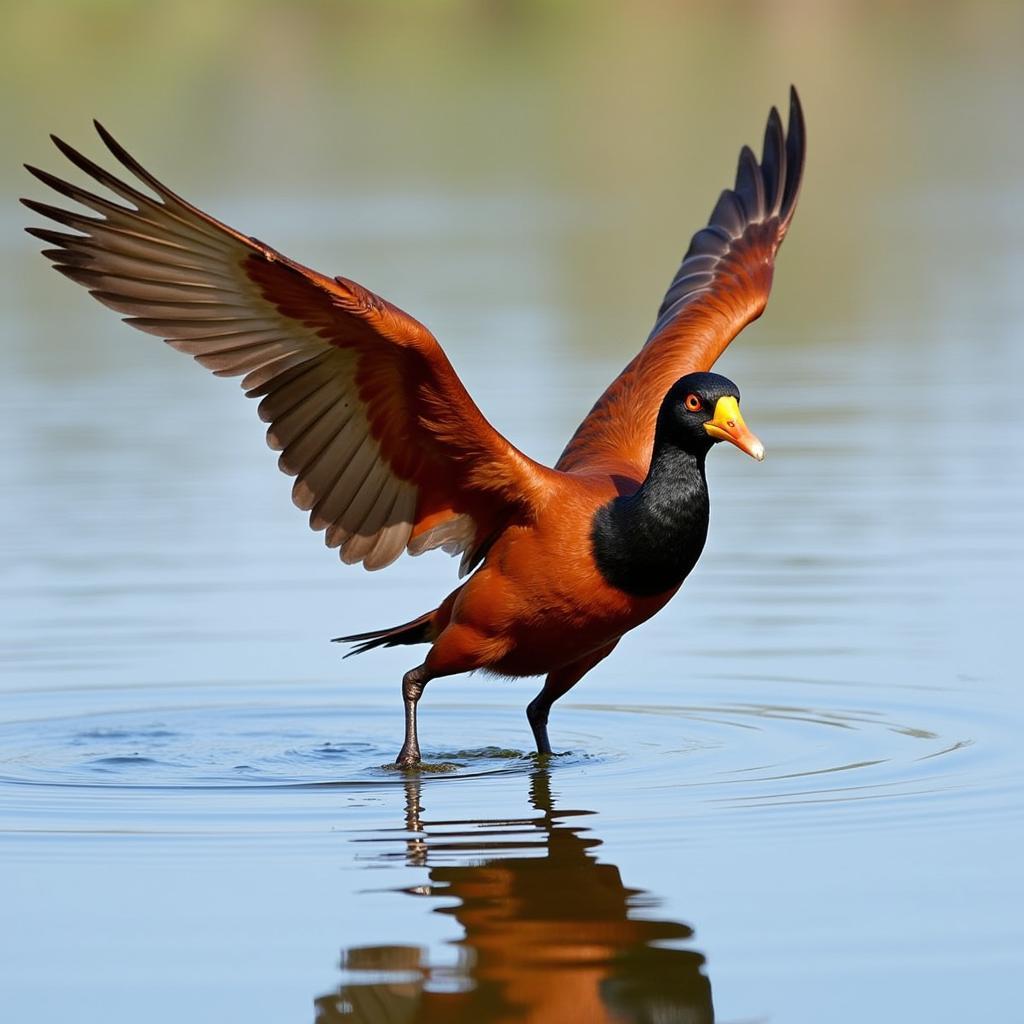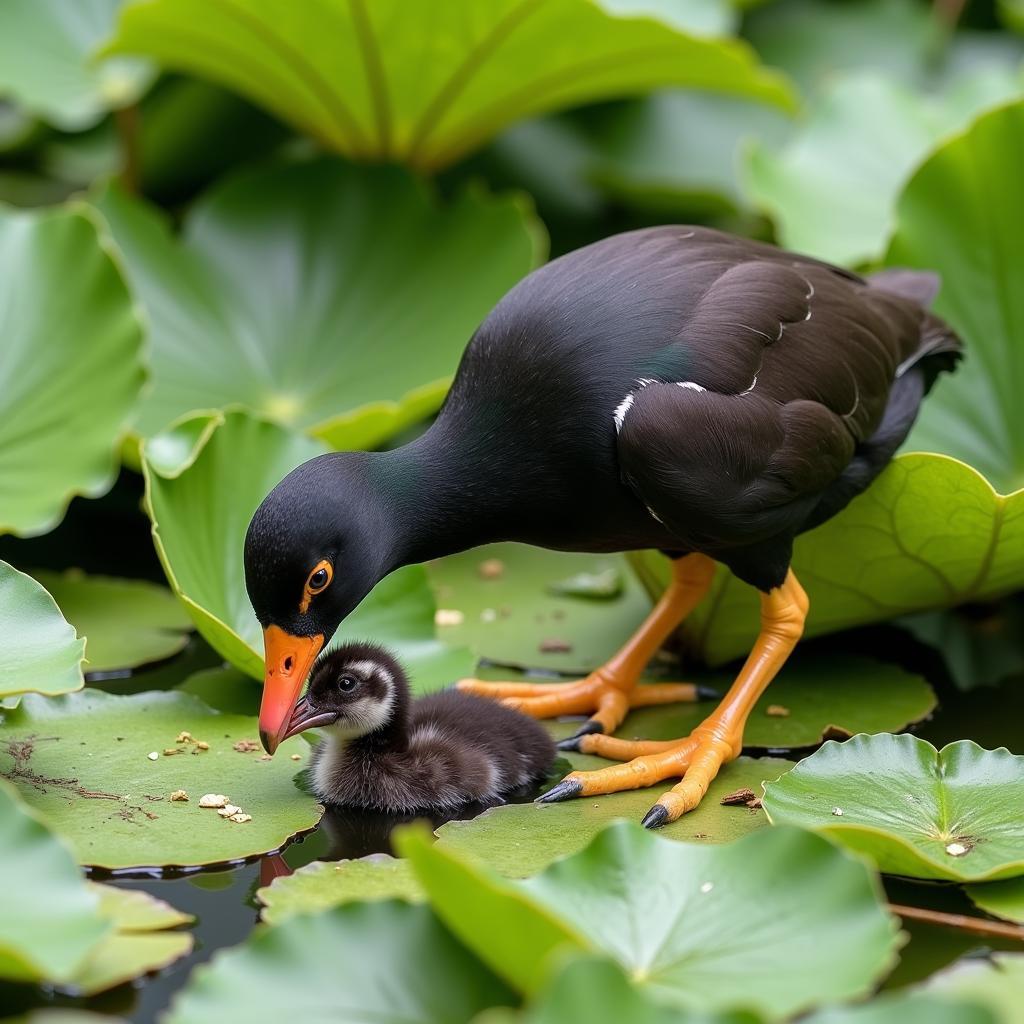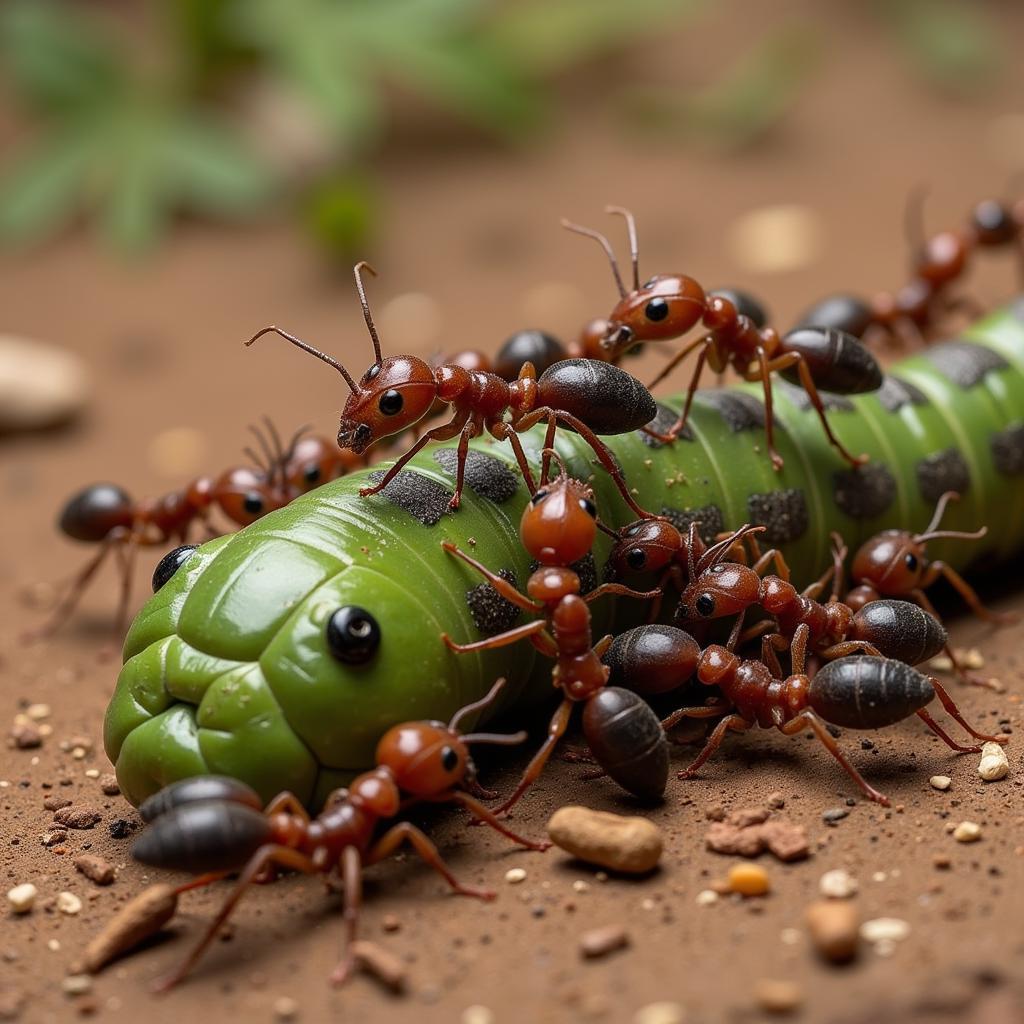African Jacana Afrikaans: A Glimpse into the Bird’s Local Name
The African jacana, a striking waterbird often seen gracing the wetlands and waterways of sub-Saharan Africa, is known by a charming name in Afrikaans: “Langtoon.” This moniker, meaning “long toe,” perfectly encapsulates the bird’s most distinctive feature – its remarkably long toes, perfectly adapted for navigating its watery domain.
A closer Look at the “Langtoon”
But the African jacana’s allure goes far beyond its remarkable toes. This bird, with its chestnut back and wings contrasting beautifully with its white face and yellow beak, is a sight to behold. Adding to its striking appearance is the bright blue patch of skin above its beak, known as a frontal shield.
 African jacana in flight
African jacana in flight
The Afrikaans name “Langtoon,” while descriptive, only hints at the fascinating life of this bird. Known for their polyandrous mating system, where one female mates with multiple males, African jacanas overturn traditional avian gender roles. The smaller males take on the primary responsibility of nest building and chick rearing, while the larger females fiercely defend their territories and their mates.
Beyond the Surface: Delving into the Jacana’s World
The “Langtoon” thrives in shallow, freshwater habitats abundant in water lilies and other aquatic vegetation. These plants serve as both a hunting ground and a nesting platform. With their exceptionally long toes, African jacanas distribute their weight evenly, enabling them to walk effortlessly across floating vegetation.
 African jacana feeding chicks
African jacana feeding chicks
Their diet mainly consists of insects, small fish, and aquatic invertebrates, which they skillfully snatch from the water’s surface or from submerged vegetation. Their sharp beaks are perfectly designed for catching and consuming their prey.
A Symphony of Sounds: The Jacana’s Call
The African jacana is a vocal bird, its calls echoing across the wetlands. These calls, a mix of harsh rasps and melodic whistles, play a crucial role in communication, particularly during territorial disputes and courtship displays.
“The African jacana’s call, while not traditionally melodious, is an integral part of the wetland soundscape. It’s a reminder of the vibrant biodiversity that these ecosystems support,” says Dr. Nomusa Dube, an ornithologist specializing in African birdlife.
Conservation Status: Protecting the “Langtoon”
Fortunately, the African jacana is currently listed as a species of Least Concern by the International Union for Conservation of Nature (IUCN). However, habitat loss due to human encroachment and pollution poses a significant threat to their populations in certain areas.
“It’s crucial that we continue to protect the wetlands that the ‘Langtoon’ and countless other species rely on,” adds Dr. Dube. “Conservation efforts, including habitat restoration and responsible water management, are essential for ensuring the long-term survival of this fascinating bird.”
The African jacana, or “Langtoon” as it’s fondly known in Afrikaans, is a testament to the diversity and wonder of African wildlife. Its unique adaptations, captivating behavior, and vital role in the ecosystem make it a true treasure of the wetlands.
